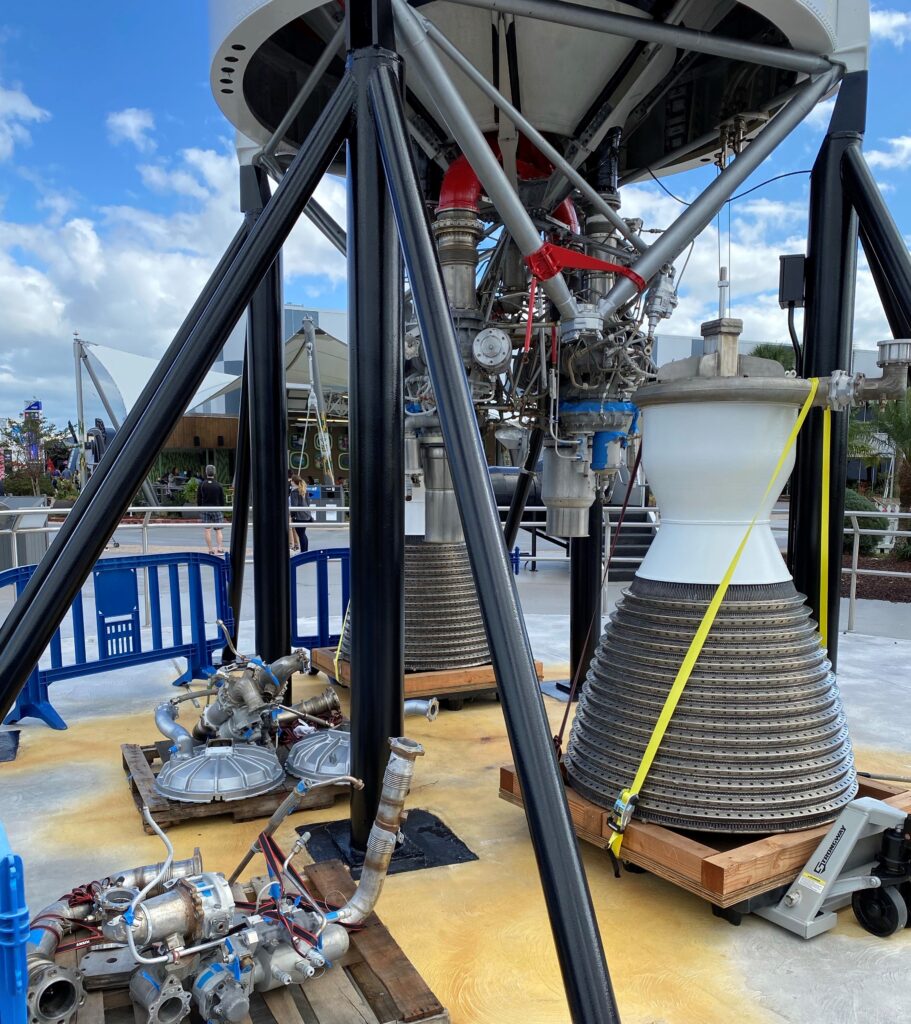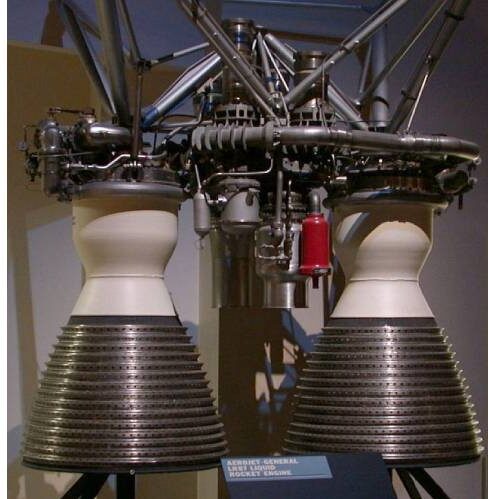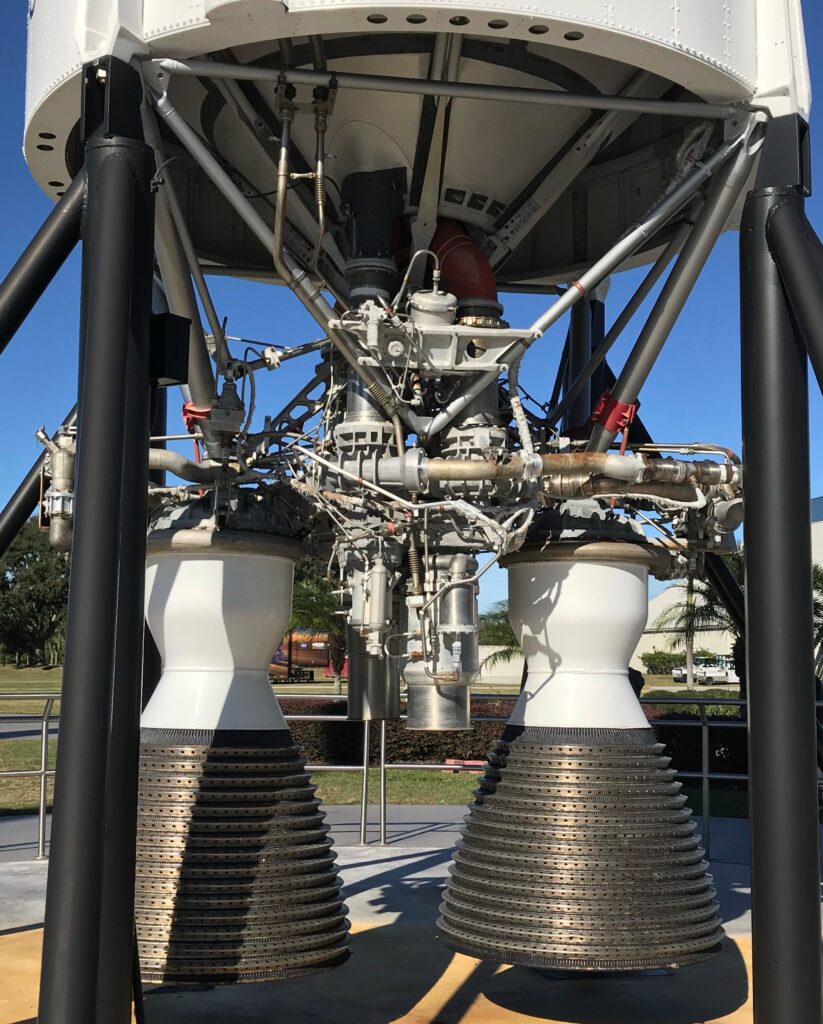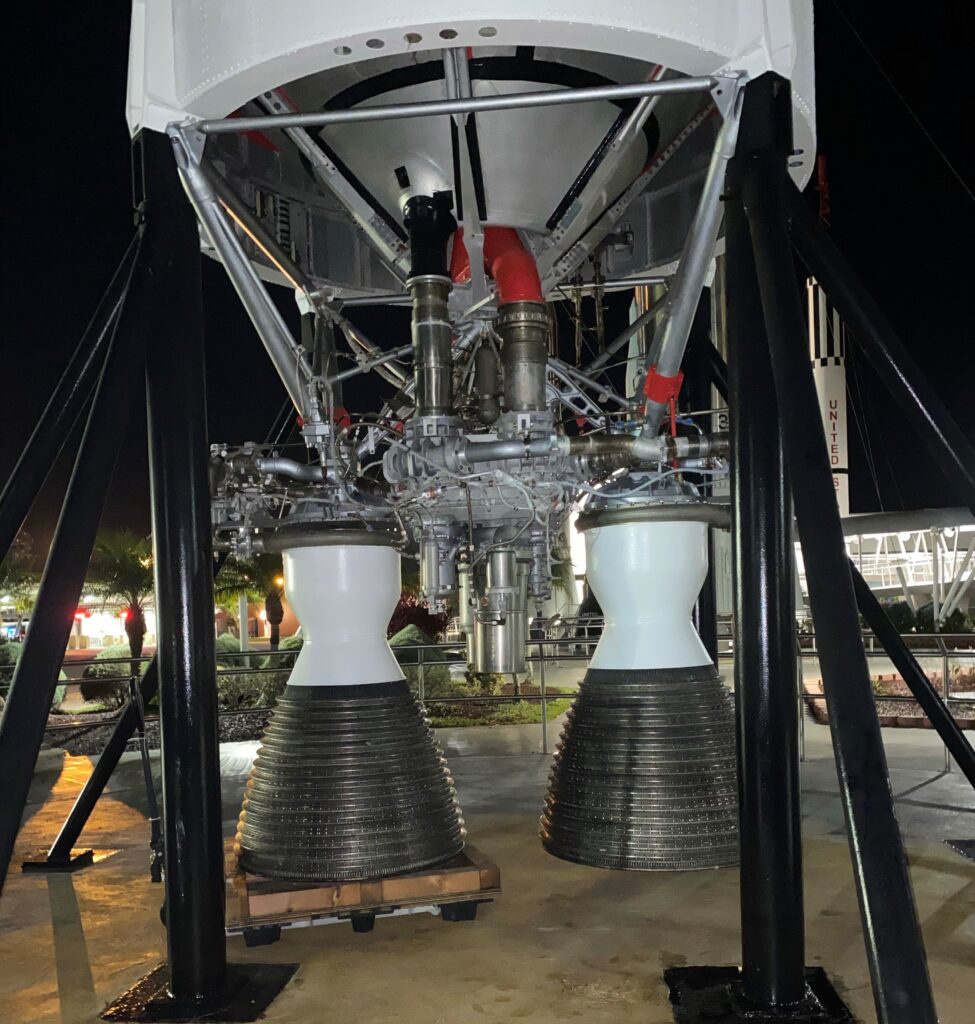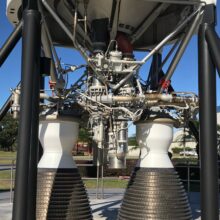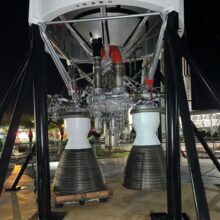KSC Titan II Rocket Engine
The Titan rocket family was developed for the United States Air Force beginning in 1955 by the Glenn L. Martin Company to fulfill the need for an intercontinental ballistic missile (ICBM). Titan rockets were also used as crewed space launch vehicles for the NASA Gemini Program. They served to deliver satellite payloads for military and civilian purposes, including the collection of weather and intelligence data. The Titan II, developed in 1962, used the LR-87-5 twin thrust chamber engine to power Stage I of the vehicle, with Stage II powered by the LR91 engine. The Titan II currently on display at the Kennedy Space Center (KSC), B-104 AF Serial No. 66-4315, is a refurbished ICBM. It was relocated from the AMARG facility at Davis-Monthan Air Force Base in Tucson, Arizona, fitted with a replica Gemini space capsule, and painted to resemble the Gemini 3 booster before being placed on display at the KSC Rocket Garden in September 2010.
In 2019, EverGreene was contracted to conduct the conservation cleaning of the two engines and aft skirt area on the Gemini-Titan II. The purpose of the treatments was to address the deterioration of the engine thrust chamber and display armature from weathering, including overall soiling, corrosion, and wear. Before treatment, the engines and aft skirt area exhibited various levels of corrosion and soiling, and the wiring insulation heavily deteriorated. The ferrous steel armatures that were fabricated in 2010 to tie the combustion chambers to the other engine parts were heavily corroded and were causing staining to adjacent components on the engines.
Conservation treatment included general cleaning with carbon dioxide blasting and environmentally friendly solutions, disassembly of engine components and display armature, corrosion removal, overall application of a corrosion inhibitor, fabrication and installation of new stainless steel support armature, repainting, and re-wrapping of wires. EverGreene also developed a maintenance plan with recommendations for periodic inspections, maintenance, and documentation.
